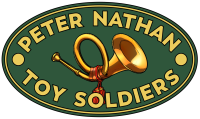3rd Sep 2024
John Jenkins Designs Preview: Incas
The Inca Empire was the largest empire in pre-Columbian America.
The Inca civilization rose from the Peruvian highlands sometime in the early 13th Century. The administrative, political and military centre of the empire was in the city of Cusco.
From 1438 to 15 33 the Incas incorporated a large portion of western South America, centered on the Andean Mountains, using conquest and peaceful assimilation, among other methods.
At its largest, the Empire joined modern day Peru, what is now western Equador, western and South central Bolivia, northwest Argentina, the southwest tip of Columbia and a large portion of modern day Chile, into a state comparable to the historical empires of Eurasia.
Its official language was Quechua.
The Spanish began the conquest of the Inca Empire in 1532 and by 1572 the last Inca state was fully conquered.
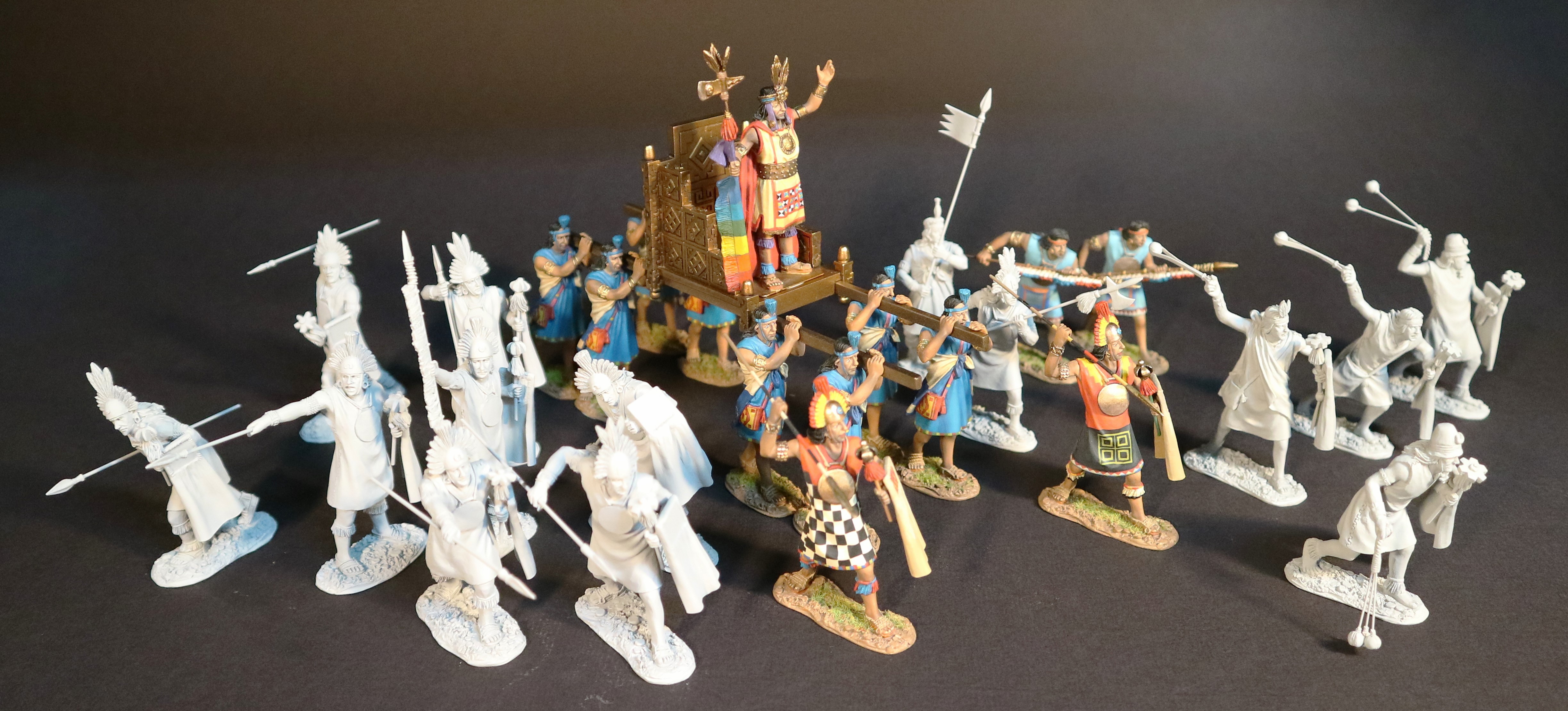
The Inca Empire was unique in that it lacked many of the features associated with civilization in the old world. The Incas were able to construct one of the greatest imperial states in human history without the use of the wheel, draft animals, knowledge of iron or steel, or even a system of writing.
They were also capable of monumental architecture, especially the use of stonework, extensive road networks reaching all corners of the empire, finely woven textiles, use of knotted strings for record keeping and communication, agricultural innovations and production in a difficult environment, and the organization and management fostered or imposed on its people and their labour.
The Inca Empire functioned largely without money and without markets. Instead, exchange of goods and services was based on reciprocity between individuals and among individuals, groups, and Inca rulers.
Taxes consisted of a labour obligation of a person to the Empire. The Inca rulers reciprocated by granting access to land and goods and providing food and drink in celebratory feasts for their subjects.
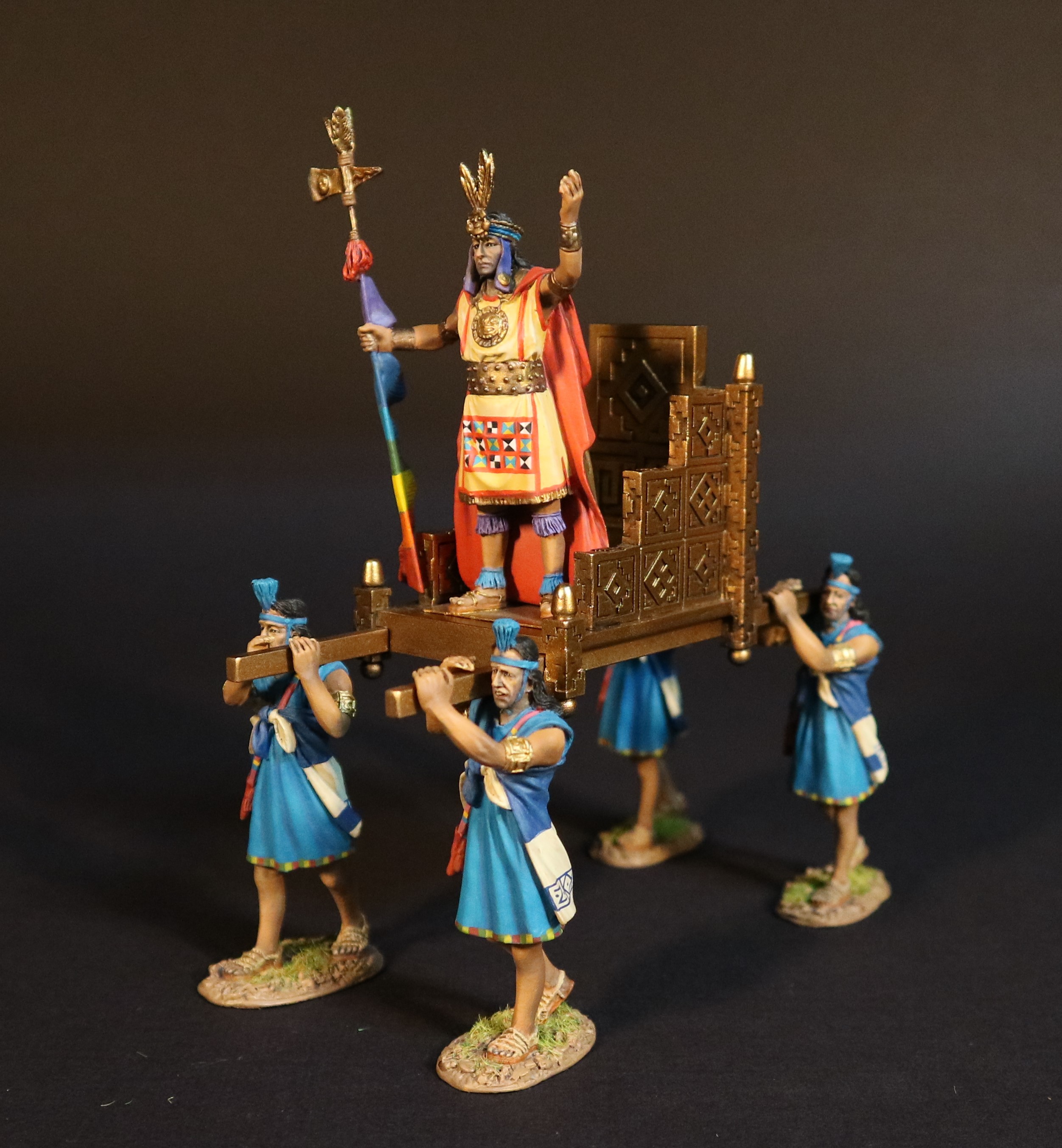
The Sapa Inca was the monarch of the Inca Empire, as well as ruler of the earlier kingdom of Cusco.
Whilst the origins of the position are mythical and originate from the legendary foundation of the city of Cusco, it seems to have come into being historically around 1100AD.
Although the Inca believed the Sapa to be the son of Inti (the Inca sun god) the position eventually became hereditary, with son succeeding father.
The Sapa Inca was at the top of the social hierarchy, and played a dominant role in the political and spiritual realm.
The Inca litter carried the commanding officers and the Sapa Inca.
Traditionally it was carried by men from Callahuaya for short trips, and for longer distances by Lucana tribesmen of the provinces of Lucana and Sora, and they were known as the “feet of the Inca”.
They were trained for this special role from the age of 20, and were usually uniformed in blue.
Pictorial sources invariably show the litter born by just four men, but it is believed that this is just an illustrative convention, since text references mention eight or sometimes even as many as 20 bearers.
The litter was normally accompanied by replacement crews, with it being recorded as a total of as many as 200-300 Lucanas accompanying the Sapa Inca’s litter.
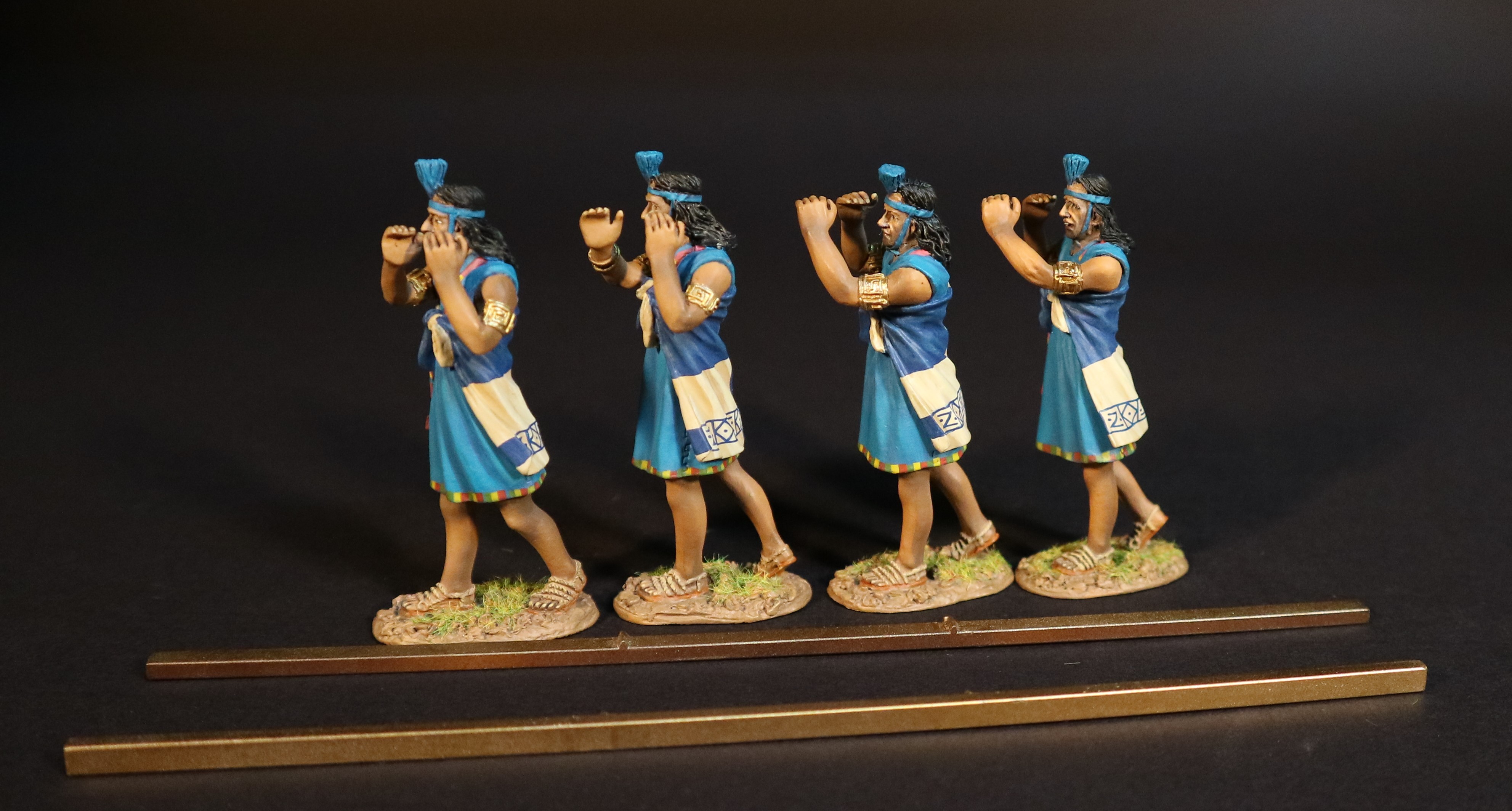
Warriors from the Carabaya Tribe replaced the traditional Lucanas as the royal litter-bearers, after the Lucanas had deserted in the early stages of the Spanish conquest. They had defected to Pizarro’s side even before the conquistadores had entered Cuzco.
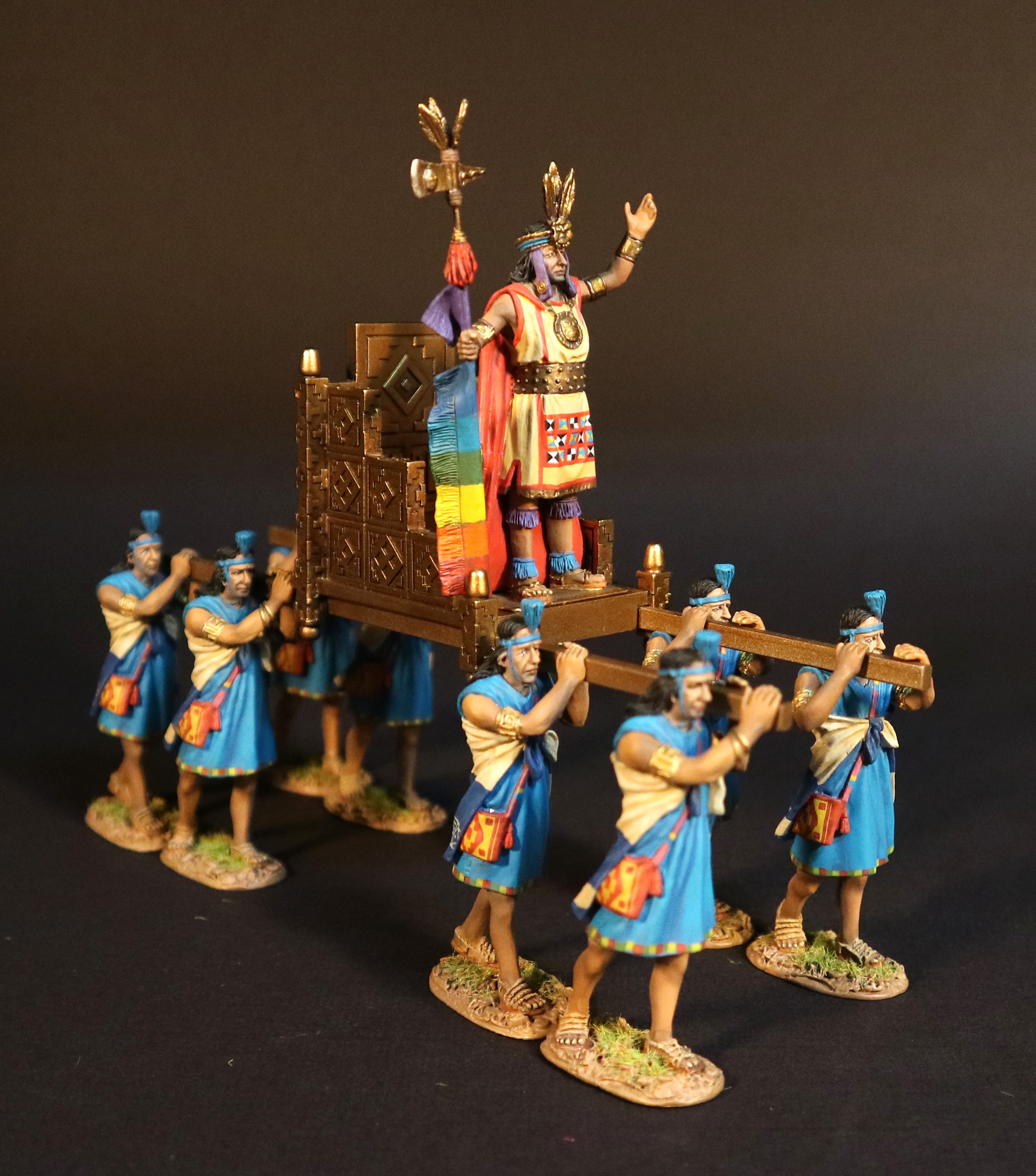
The basic Inca costume as worn throughout most of the empire comprised a breechclout, a sleeveless shapeless shirt called the “Uncu”, sandals, and occasionally a woollen “yacolla” or mantle.
All Inca clothes were made mostly of alpaca or llama wool.
The cloth took three forms, an uncoloured coarse weave called aucasa, used by soldiers and commoners, a finer weave of coloured and decorated cloth called compi, used by officers and chieftains, and a very fine weave used by the royal Inca ayllus.
INCA SPEARMEN
The army’s elite units were provided by the Inca troops themselves, composed of the military contingents of the capital’s two rival divisions of Hanan (upper) and Hurin (lower) Cuzco. Which was north and south of the Urubamba river.
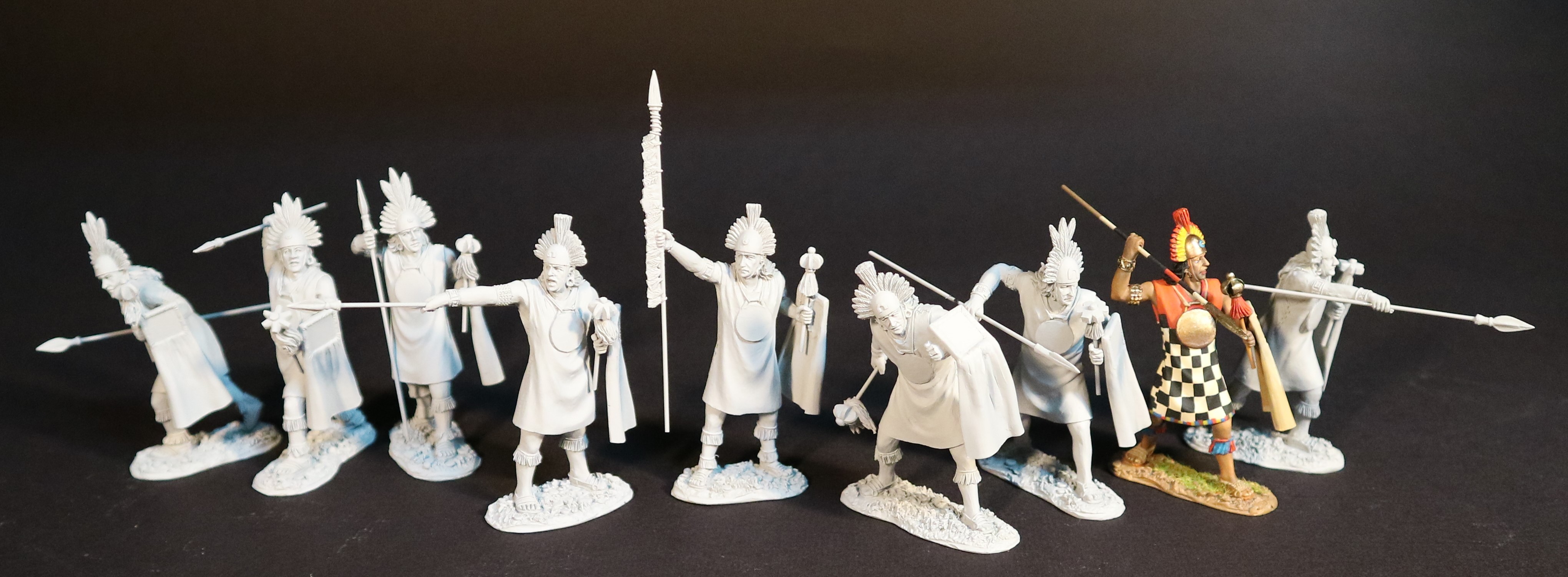
These soldiers were fiercely competitive with each other, and were called “huaminca”, meaning veterans.
These veterans received formal military training as part of their coming of age on reaching 14 or 15 years of age. They were taught not only how to use various weapons but also how to manufacture them.
They would undergo numerous tests of courage and stamina, on successful completion of which they received assorted insignia denoting their status, including having their ears pierced, as well as being given the traditional Inca weapons of sling, mace and shield.
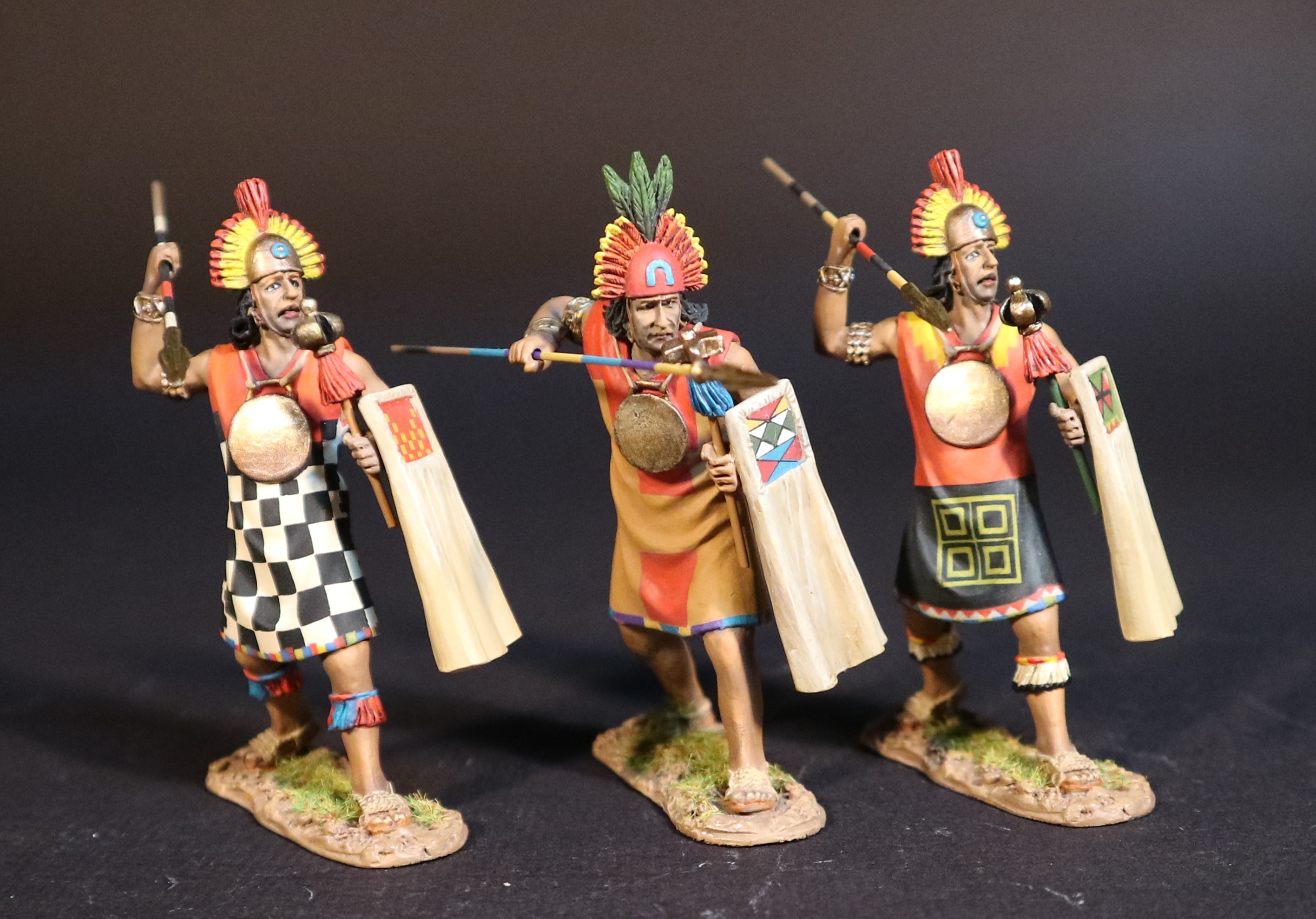
CANARI WARRIORS
The Canari consisted of a loose confederation of individual, largely independent tribes. They wore their hair long by Inca standards, and knotted some of it at the front of the head.
They wore metal rings through ears and nose, which earned them the nickname “Quillacana”, “metal noses”.
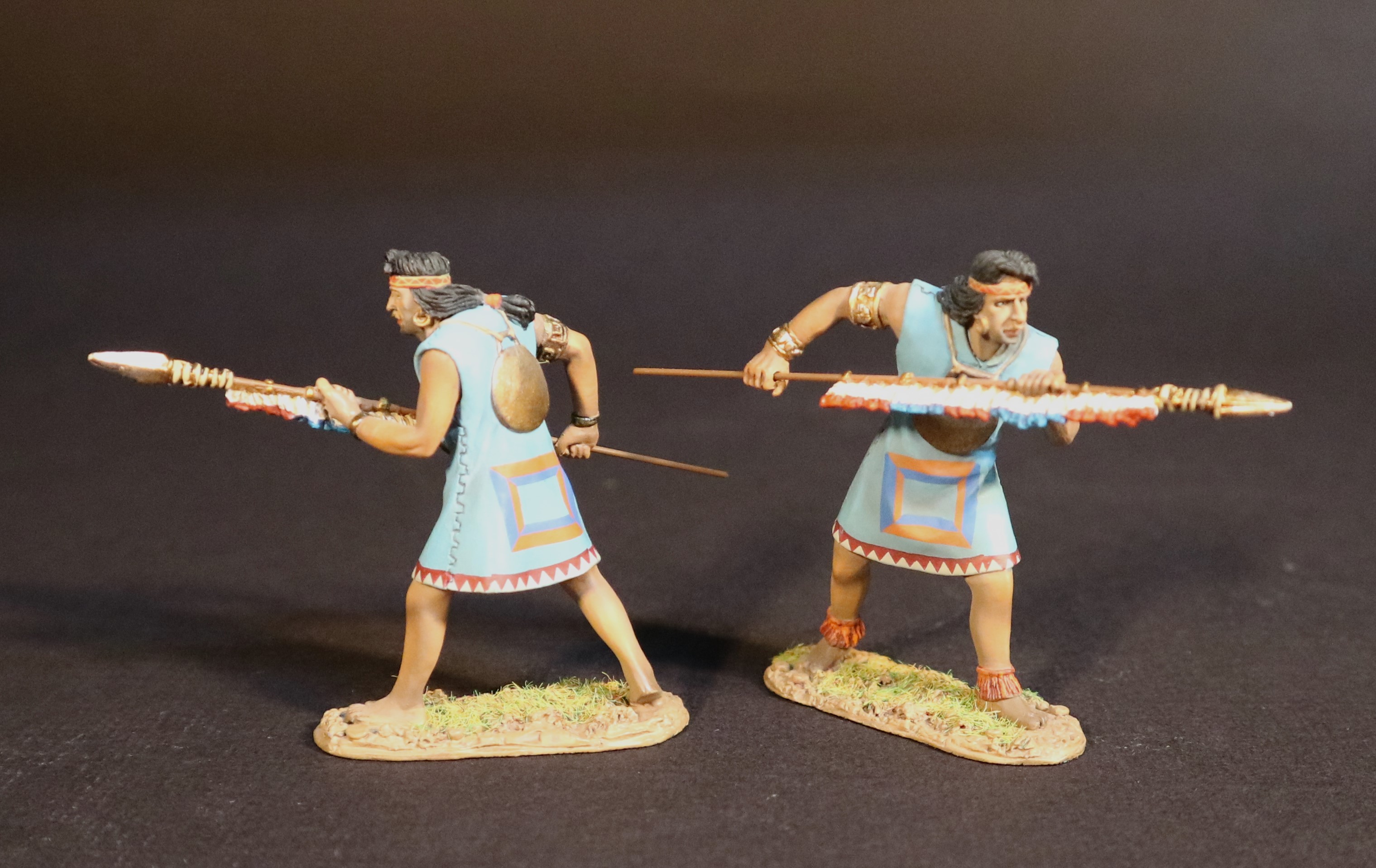
Whenever Canari are mentioned in Spanish texts they are always referred to as spearmen, and it is with spears that the only period picture depicts them.
The type of spear was called a Llaca, was about 6-7 foot long with a bronze, copper, stone or fire hardened wood. They were usually bordered comprising of multi coloured feathers that ran through rings almost the whole length of the shaft.
COLLA WARRIORS
The Colla tribe were noted for their coneshaped black woollen cap, called a “Chukka”, which normally had a crescent badge on the front. The uncu is always depicted as striped , divided into four vertical panels. The characteristic weapon of the Colla tribe was the bolas, which was made up of two to five fist sized stone weights wrapped in rawhide and attached to 18 inch cords. These could bring down a charging horse by entangling its legs, and is recorded as being used against Spanish cavalry during Manco’s rebellion.
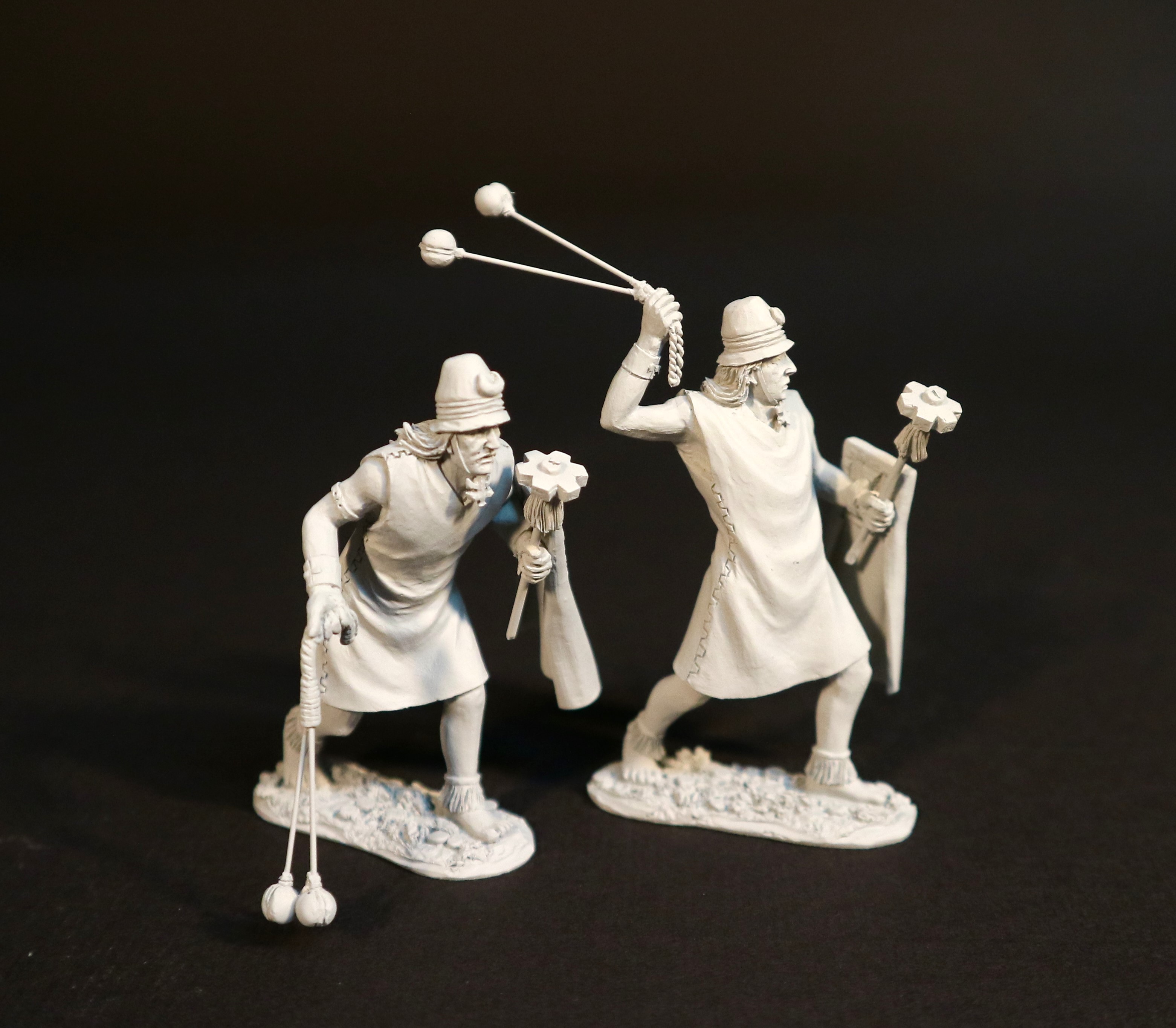
The traditional Inca weapon combination, was the sling, mace and shield.
The sling, which was made from wool, leather or cabuya fibre was used by every rank of society, from the Sapa Inca to the lowliest commoner (though only the Sapa Inca used slingshot of gold!)
It was observed by the Spanish that a stone could be hurled with such force that it could kill a horse.
The small bag “chuspa” suspended from the shoulder was used to carry slingstones in war, and small tools, amulets, coca etc in peacetime.

